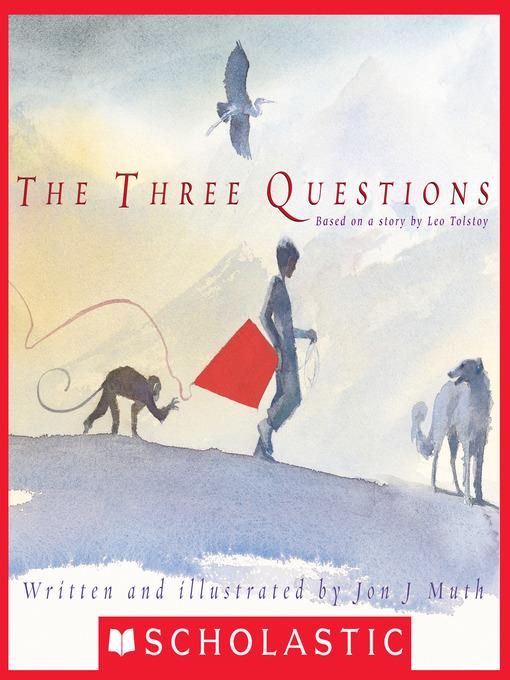
The Three Questions
فرمت کتاب
ebook
تاریخ انتشار
2015
Lexile Score
560
Reading Level
2-3
ATOS
3.4
Interest Level
K-3(LG)
نویسنده
Jon J. Muthناشر
Scholastic Inc.شابک
9781338042429
کتاب های مرتبط
- اطلاعات
- نقد و بررسی
- دیدگاه کاربران
نقد و بررسی

Starred review from February 11, 2002
Muth (Come On, Rain!) recasts a short story by Tolstoy into picture-book format, substituting a boy and his animal friends for the czar and his human companions. Yearning to be a good person, Nikolai asks, "When is the best time to do things? Who is the most important one? What is the right thing to do?" Sonya the heron, Gogol the monkey and Pushkin the dog offer their opinions, but their answers do not satisfy Nikolai. He visits Leo, an old turtle who lives in the mountains. While there, he helps Leo with his garden and rescues an injured panda and her cub, and in so doing, finds the answers he seeks. As Leo explains, "There is only one important time, and that time is now. The most important one is always the one you are with. And the most important thing is to do good for the one who is standing at your side." Moral without being moralistic, the tale sends a simple and direct message unfreighted by pomp or pedantry. Muth's art is as carefully distilled as his prose. A series of misty, evocative watercolors in muted tones suggests the figures and their changing relationships to the landscape. Judicious flashes of color quicken the compositions, as in the red of Nikolai's kite (the kite, released at the end, takes on symbolic value). An afterword describes Tolstoy and his work. Ages 6-up.

June 1, 2002
Gr 1-4-Young Nikolai questions Sonya, the heron; Gogol, the monkey; and Pushkin, the dog: "When is the best time to do things? Who is the most important one? What is the right thing to do?" Unsatisfied with their responses, he seeks answers from Leo, an old turtle living alone high in the mountains. He helps dig a garden and rescues a distressed panda and her cub in a storm. While the boy feels peace, he still doesn't have his answers, but Leo explains to Nikolai that if he hadn't stayed to dig, he wouldn't have heard the panda's cries for help. Therefore, at that moment, the important time was spent digging, the turtle was the most important one, and helping in the garden was the right thing. Later, saving the panda and her child were most important. So, now is the most important time, and the one you are with is most important, as is doing good for that one. Muth's languid watercolors, some sketchy and others fully developed, are vaguely Chinese in setting, and become less dramatic and more ethereal as the story moves toward its thematic statement. An author's note explains the derivation of the names and sources of the story, and gives a short statement about Tolstoy. This is a fanciful though not wholly convincing presentation of a Zenlike concept of what's truly important that would at the very least inspire discussion.-Susan Hepler, Burgundy Farm Country Day School, Alexandria, VA
Copyright 2002 School Library Journal, LLC Used with permission.

March 15, 2002
Ages 4-8. In Tolstoy's original story a tsar asks three questions (What is the best time to do things? Who is the most important one? What is the right thing to do?), and he finds the answers when he unknowingly saves his enemy. Muth's gentler, simpler version is closer to a fable about a boy and his animal friends. Beautiful, playful watercolor paintings show Nikolai with heron Sonya, monkey Gogol, and dog Pushkin on the shore. The animals can't really answer the big questions so Nikolai hikes into the mountains to consult wise old turtle Leo--and while Nikolai is there, he saves a panda and her child in a roaring storm, finding his answers. Muth's large-size pictures are open and beautiful. Some of the soft-toned landscapes are like Japanese paintings, with sharply defined characters against blurry views of water, mountain, and sky. Children will want to talk about the questions and answers, though a version closer to Tolstoy's original would have been more compelling: What if you saved someone who was trying to harm you?(Reprinted with permission of Booklist, copyright 2002, American Library Association.)

























دیدگاه کاربران